George Miller
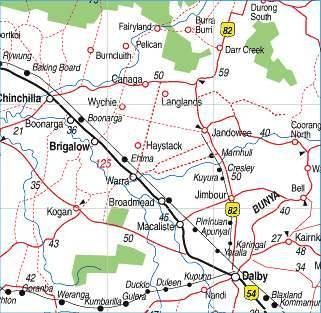
George Miller
Order of Australia, 1996.
MBMS (University of New South Wales.}
HonDLitt, Honorary Doctor of Literature, Doctor of Letters.
World-reknowned Film Producer, Director, and Script Writer.
Parental Background
Dimitri (Jim) Castrisios Miliotis was born in Mitata, Kythera. The Milioti "patriko spiti" is in "Sklavyanika", in Mitata, on the road leading down to the "vrissi" - natural spring. [See photographs at kythera-family.net.] Jim arrived in Australia from Kythera, in 1921, aged 9 years. He simplified his name from Miliotis (the family 'paratsoukli') to Miller. Jim changed the name by Deed Poll.
Jim followed a precedent laid down by his father George - who used the family 'parachoukli'- instead of his surname. The 'miliotis" parachoukli derived from the fact that the family owned/operated a mill.
George Millers mother, Envangalia (Angela) was born in 1921, in Mikrasia (Asia Minor) - modern day Turkey, to John and Katina Balloyoulo. Following the upheaval of 1922, her family became refugees. They migrated to Lesbos (Mytellini) in 1922, and then moved to Australia in 1925. On arrival, Balloyoulo was anglicised to Balson.
John Balson operated the "Venice Cafe", on the Hyde Park end of William Street, Sydney, for many years. The building no longer exists, but it would be very interesting to obtain a photograph(s) of the cafe to post onto kythera-family.net.
The Balson's later moved to West Kempsey, on the NSW North Coast, where they operated a Cafe.
Jim Miller, was inducted into the Australian Army, and was transferred to Kempsey. There he was introduced to the Mottee family - fellow Kytherians - and inevitably, the Balson family, including beautiful daughter, Angela.
He was cautioned - "...don't try to chat her up too much...her Dad is very strict." Jim would often be invited to dinner. Mr Balson and the army recruit got on very well. "Jim would play a banjo, and Dad a mandolin, in the back kitchen....while I was in the front of the shop." After Jim left Kempsey, a nascent courtship was continued by letter-writing.
They later married and settled in Chinchilla, a small town in South-western Queensland. Asked to describe the qualities of her husband Angela proffered that "..he was a very romantic man...a hard man in some ways...who liked his own way....but softly spoken....very honest...a(civic) and service minded man...". Angela had married for love, and clearly the relationship always remained a loving and caring one.
Miller Family History
They had 4 sons, the first two, non-identical twins; George and John, and later, Chris and Bill (Vassilli).
George, the subject of this entry, has become a world famous film producer, director and writer.
George, was born on the 3rd March 1945, at
Chinchilla, Queensland, Australia.
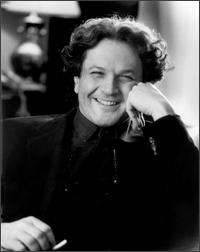
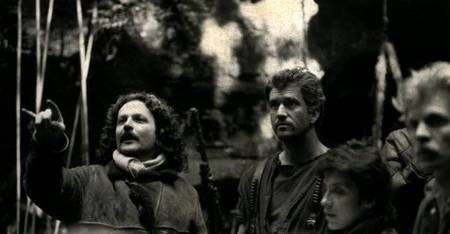
Chinchilla's location within the state of Queensland, nation of Australia.
Chinchilla is said to have been named by the explorer Ludwig Leichhardt from the aboriginal word for the native cypress pine growing here abundantly - jinchilla.
It is Located 294 km west of Brisbane on the Warrego Highway, 83 km west of Dalby and 302 m above sea level.
Shire Area : 8700 sq km
Elevation : 302 m
Population: Town 3500, Shire 5827
Average Rainfall : 625mm
Products: Cattle, sheep, timber, wheat, barley, sorghum, millet, sunflower, cotton, melons, table grapes, stone fruit, vegetables. Chinchilla is also noted for its petrified wood, agate, quartz and jasper.
Chinchilla is a thriving rural settlement which boasts one of the finest transportation museums in Australia.
For further information see,
http://members.ozemail.com.au/~russue/our_town.htm
http://www.walkabout.com.au/fairfax/locations/QLDChinchilla.shtml#Tourist%20Information
http://www.chinchilla.org.au
The Miller General Store was quite large, selling fruit, smallgoods, newspapers, and operating as a cafe as well. Initially it was begun in a flood plain on the "wrong" side of the railway tracks, in Chinchilla Street. Later it was moved to higher ground, to Heeney Street, where it was known as the Niagara Cafe.
Esme Horswood, Secretary of the Chinchilla Historical Society Inc., contends that "...everyone I have spoken to has wonderful memories of the Miller's cafe, of ice-cream sundaes, lime ice-cream sodas, good fish meals, and as a good spot to meet your friends, especially the teenagers of the day. One could squeeze into those long seats in the cafe; they used to sit six a side if you squeezed in...".
Jim Miller placed a high value on honesty, and service. He insisted that the food be fresh. And he was very innovative in his store advertising. "One time he hired a plane to throw pamphlets over the town of Chinchilla. One pamphlet had a lucky number on it, and whoever found and presented that pamphlet was given a free box of fruit." Angela worked in the shop beside her husband, whilst raising the 4 boys.
Commercial competition to the store was provided by another Greek family in Chinchilla, the Melegans.
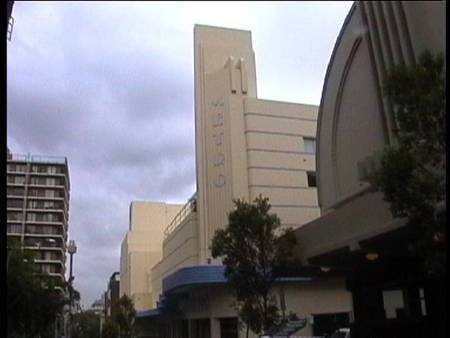
A number of Kytherian's became employee's of the Miller's - including two of my maternal uncles, Theothosios (Theo) Belo Corones, and his brother, Manolis (Manuel) Coroneos, from Karavas, Kythera. They lived in the quarters behind the shop, and interacted with the young Miller children. The photograph above depicts an infant Chris Miller, flanked by Manuel Coroneos on the left, and his father Dimitri on the right.
Both uncles spoke highly of Jim, and my Uncle Theo confirmed his "softly spoken style" - a marked contrast to the "boisterous" style of Triunduphilo - Theo's father - and my grandfather.
"Much later, George would refelct on his chidhood at Chinchilla: the weekly radio series that so fired his imagination, and even more powerfully, the feature films shown in the tiny picture theatre in Heeney Street. He recalled the days of playing cowboys and indians with his school-friends, and how the drama of the games combined with those exciting scenes shown in the picture theatre all galvanised his imagination".
The Miller family maintained the store in Chinchilla for 11-12 years; at which time they sold it, and moved to Vaucluse in Sydney. In the year leading up to the move, the twins, George and John, attended Ipswich Grammar. At 12 years of age they began school at Sydney Boys High. Brothers Chris and Bill subsequently also attended Sydney Boys High.
The Miller's remained at Vaucluse for ten years, and later moved to Coogee (5 years), and Clontarf, and ultimately Balgowlah Heights.
As a youth George served as an altar boy at the Greek Orthodox Church of Saint George, Rose Bay. After high school he studied medicine at the University of New South Wales (along with twin brother John), and although university lectures were sometimes sacrificed in favour of attending the latest movies - his brother was often left with the task of taking notes for both of them - George successfully completed his studies. While in his final year at Med School, George and his brother made a one minute short, that won them first prize in a student competition.
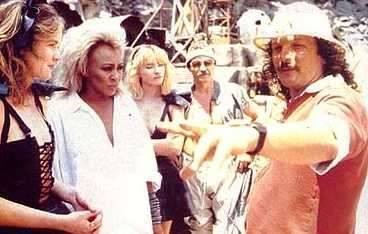
(Ad)Venture into Films
In 1971, George attended a Film Workshop at Melbourne University where he met fellow student, Byron Kennedy. In 1972, Miller completed his residency at Sydney's St Vincent's Hospital, spending his time-off crewing on short experimental films.
He and Kennedy then 'went for broke', and pooling all their resources - a grand total of $1,500 - made the short film Violence in the Cinema - Part 1. This was a 14-minute parody of that era's violent films.
While he practiced as a physician for a number of years, he felt, as he revealed in his autobiographical feature documentary A Century of Cinema: 40,000 Years of Dreaming (1995), that he could do more good for people as a filmmaker - one who acts as a catalyst for "public dreaming".
Working in the Emergency Room of a public hospital, George "had seen many of the injuries and deaths of the type depicted in what would soon become his first full length feature film". He "felt that the audience would not believe such things were happening today, so he decided to write the story instead as taking place in a dystopic future".
George Miller's fascination in the cinematic art-form and its capacity to affect people dramatically led to his direction of the satirical short film Violence in the Cinema: Part 1 in 1971. "His short film contains a number of shocking images, such as a hot poker being thrust into an eyeball, in the tradition of Salvador Dali and Luis Bunuel's masterpiece Un Chien Andalou (1923). The film earned Dr George Miller, two AFI Awards, including one for Best Short Film -that being a sign of things to come".
Miller formed an irrepressible bond with fellow film fanatic Byron Kennedy. The pair collaborated on Frieze - An Underground Film, (1973), which was another short, before forming the Kennedy Miller Production company in the lead-up to their first feature film, Mad Max 1 (1979).
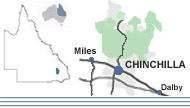
Mad George..........Mad Max
Kennedy & Miller created Mad Max 1, with the assistance of first time screen writer James McGausland.
The film was shot over a period of twelve weeks, between December 1978 and February 1979, just outside Melbourne. Many of the car chase scenes for the original Mad Max were filmed near the town of Lara, just north of Geelong (Victoria, Australia). The movie was shot with a widescreen anamorphic lens, making it the first Australian film to do so.
"Mad Max 1 was made on an incredibly low budget of close to $300,000 - approximately $15,000 of which went to its inexperienced star - the now legendary Mel Gibson.
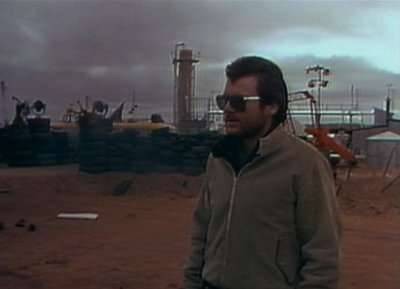
George Miller and Mel Gibson on the set of Mad Max 1
Due to the film's low budget, the post-production was done in Miller's house, with George editing the film in the kitchen and Byron Kennedy editing the sound in the lounge room.
The following brief plot summary of Mad Max 1 derives from madmaxonline.com.
"Mad Max is set in a dystopian near-future society suffering from a prolonged fuel shortage. Civil order is rapidly deteriorating and lawless gangs rampage across the desolate landscape, in defiance of the crumbling police force, the Main Force Patrol (MFP).
An escaped cop killer, the Nightrider, is killed during a high-speed pursuit by a young MFP patrolman, Max Rockatansky. The Nightrider's comrades, a motorcycle gang led by the Toecutter, hold Max responsible and kill his partner, Jim Goose, when he attempts to bring them to justice for a violent spree in a small country town.
Distraught at Goose's horrific death, Max walks away from the violence of the MFP and attempts to build a peaceful life with his wife Jessie and their infant son, Sprog.
Meanwhile, the Toecutter is still hungry for revenge for the Nightrider's death.
Max, now resigned from the MFP, is spending time with his family in a secluded beachfront area when the Toecutter Gang stumble across their hideaway. Jessie and Sprog are brutally murdered.
Deranged with grief, Max equips steals a black supercharged "Pursuit Special" Interceptor and sets out, as a vigilante, to track down the gang and avenge the deaths of his family."
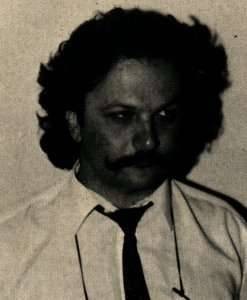
Jessie and Sprog are mown down by the Toecutter gang. "In the roar of an engine....Max lost everything.""
Mel Gibson in action in Mad Max 1
By the end of the picture Max claims his revenge, and continues racing the highways alone.
Vehicles & Stunts in Mad Max 1.
Due to the film's low budget, all the vehicles in the film were just modified vehicles of that era.
Max's yellow Interceptor was a 1973 Ford Falcon XB sedan (previously, a Melbourne police car) with a 300bhp 351C (Cleveland) V8 engine, with a GS/GT specification hood, grille, driving lights, and other modifications. Likewise the black Pursuit Special (often erroneously known as an Interceptor) was a limited, GT351 version of a Ford XB Falcon Hardtop, sold in Australia from December 1973 to August 1976, which was modified by the film's art director Jon Dowding.
Big Bopper, driven by Roop and Charlie was also a Ford Falcon XB sedan, but was powered by an engine unique to Australia, the 302 Cleveland V8. March Hare, driven by Sarse and Scuttle was an inline six-powered Ford Falcon XA sedan (this car was formerly a Melbourne taxi cab).
Of the motor cycles that appear in the film, fourteen were donated by Kawasaki and were driven by a local Victorian motor cycle gang, the Vigilantes, who appeared as members of Toecutter's Gang. By the end of filming, fourteen vehicles had been destroyed as a result of all the stunts.
See,
* To the Max - Behind the Scenes of a Cult Classic, Mad Max DVD (Village Roadshow)
During the filming of Mad Max, George Miller had to sacrifice his own van to use in a particularly destructive stunt sequence as the group couldn't afford another stunt vehicle.
Commercial Success
Regardless of these adversities, money would not pose a problem in the company's seminal stage, though, as Mad Max went on to set box-office records around the world, grossing more than Star Wars (1977) in Australia."
The film achieved incredible success, holding a record in Guinness Book of Records as the highest profit-to-cost ratio of a motion picture, and only losing the record in 2000 to The Blair Witch Project. The film had been totally financed independently - and went on to earn $100 million world wide. The film was awarded four Australian Film Institute Awards in 1979.
When the film was first released in America, all the voices, including that of Mel Gibson's character, were dubbed with US accents at the behest of the distributor, American International Pictures, for fear that audiences would not take warmly to actors speaking entirely with Australian accents. The only exception was the singer in the Sugartown Cabaret, played by Robina Chaffey. The original Australian dialogue track was finally released in the U.S. in 2000 in a limited theatrical reissue by MGM, the film's current rights holders (it has since been released domestically on video).
See the exceptional Mad Max 1 web-site at:
http://www.madmaxonline.com/index.htm
Call Sheet, from the first day of filming in Oct 1977
Autographed Photo – Crew of Mad Max 1
Mad Max II, also known as The Road Warrior, in the USA, followed in 1981.
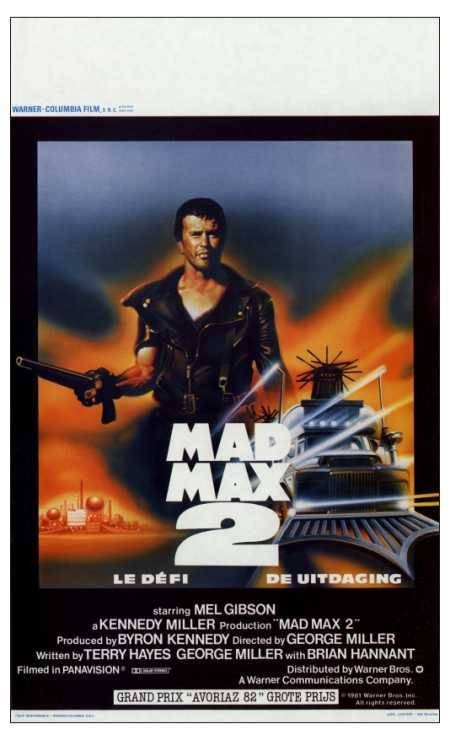
Script of the Novelisation of Mad Max 2. Chapter 1.
Mad Max 2. Astro Pilot.
Mad Max III, 'Mad Max: Beyond Thunderdome', was released in 1985. George "was committed to making it for Byron's sake as they had been working on various ideas for the film before he died. George contacted Terry Hayes to help write the screenplay. Terry Hayes had written the Mad Max novelisation and then also the Mad Max 2 screenplay (Terry Hayes pitched his idea for the third film to Mel Gibson as "Mate, think of it as Jesus Christ in Leather Pants!". The third film once again took the character of Max in a totally new direction and was once again a hit with audiences."
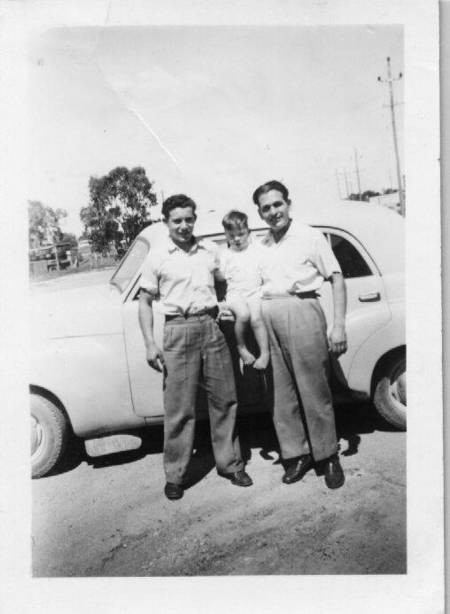
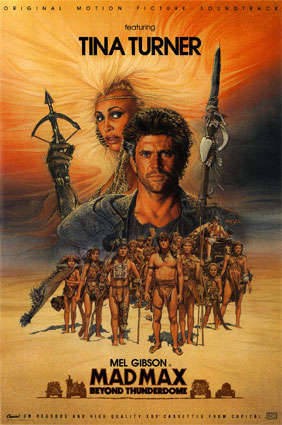
George Miller on set of Mad Max 3.
Miller became part of a movement dubbed the "Australian New Wave" by the press. They were a group of filmmakers and performers who emerged from "Down Under" at about the same time in the early 1980's and found work in other parts of the world. Other members included actors Mel Gibson and Judy Davis and directors Peter Weir and Gillian Armstrong.
'Writer and film critic Adrian Martin in a recent book The Mad Max Movies (Currency Press and ScreenSound Australia, 2003)argues that in the Mad Max movies George Miller "draws less from his immediate predecessors in independent '70s cinema (such as Martin Scorsese, Robert Altman or Terrence Malick) than from a handful of seemingly classical directors: Alfred Hitchcock, Howard Hawks, Fritz Lang, Orson Welles, Sam Fuller, Jacques Tourneur, Raoul Walsh, Budd Boetticher and Robert Aldrich (whose Kiss Me Deadly [1955] obviously provides inspiration for the character of the Greek-Australian car mechanic played by Nick Lathouris).
But in the borrowing and adapting of tropes from these masters, their formalist and modernist potentiality is heightened, brought into sharp relief. In this crucial sense, the Mad Max films are essays in film criticism, history and theory: they reinvent, help us to see anew, their forebears, and action-horror directors can do this no less than the critics-turned-auteurs of the French New Wave."
George Miller was part of the Australian New Wave. But his own motivation to create movies transcended his "Australianess". His primary motivation was "mystical".
He owes allegiance to both Carl Jung and George Campbell.
This is George Miller speaking to the audience during the Sydney Institute's Larry Adler Lecture for 1996, held at The Regent Hotel, Sydney, on Wednesday 11 September, 1996.
Full text of the 1996 speech
"My first movie, Mad Max, was purely and simply a piece of visual rock and roll. What I didn't know at the time was that there were larger impulses at work.
As the Mad Max films made their way around the planet, they seemed to resonate somehow, culture to culture. To the French, these were post-modern, post-apocalyptic westerns and Max was a gunslinger. In Japan he was an outlaw Samuari. In Scandinavia, a lone viking warrior. The movies had tapped into the universal hero myth and I was given a taste of what Carl Jung was on about when he described the collective unconscious.
Here it was, first hand. And I, despite my creative vanities, was its unwitting servant. I was reminded that films, like all storytelling, have deeper dimensions. And I learned to look beyond the obvious, to feel out subtext where one is likely to find some elemental truths. Films are like dreams. When we congregate with strangers in the darkness of the cinema, it's a kind of public dreaming, where we process, mostly unconsciously, the more insistent concerns of our lives.
...........
Jung might have described the terrain, but Joseph Campbell is the consumate guide. Until Campbell, I often wondered why I was mucking about in the film industry, indeed why any of us have this urge to communicate through narrative.
I learned from his dazzling scholarship, for instance, that the same stories arise spontaneously across time and space and are used as a way of connecting ourselves to all that had gone before and all that will come after."
Joseph Campbell is one of the 20th centuries consumate investigators and explicators of the "mystical".
This is Campbell explaining his notion of the Hero's separation and return. It sums up the Mad Max cycle perfectly.
"The usual pattern is, first, of a break away or departure from the local social order and context; next, a long, deep retreat inward and backward, as it were, in time, and inward, deep into the psyche; a chaotic series of encounters there, darkly terrifying experiences, and presently (if the victim is fortunate) encounters of a centering kind, fulfilling, harmonizing, giving new courage; and then finally, in such fortunate cases, a return journey of rebirth to life. And that is the universal formula also of the mythological hero journey, which I, in my own published work, had described as: 1) separation, 2)initiation, and 3) return. (Campbell, 1972, Myths to live by. pp. 208-209)
A longer summary of Joseph Campbell’s Monomyth from Hero With A Thousand Faces:
"The standard path of the mythological adventure of the hero is a magnification of the formula represented in the rites of passage: separation--initiation--return: which might be named the nuclear unit of the monomyth.
Stages of the hero’s journey:
1. Birth: Fabulous circumstances surrounding conception, birth, and childhood establish the hero’s
pedigree, and often constitute their own monomyth cycle.
2. Call to Adventure: The hero is called to adventure by some external event or messenger. The Hero
may accept the call willingly or reluctantly.
3. Helpers/Amulet: During the early stages of the journey, the hero will often receive aid from a
protective figure. This supernatural helper can take a wide variety of forms, such as a wizard, and
old man, a dwarf, a crone, or a fairy godmother. The helper commonly gives the hero a protective
amulet or weapon for the journey.
4. Crossing the Threshold: Upon reaching the threshold of adventure, the hero must undergo some
sort of ordeal in order to pass from the everyday world into the world of adventure. This trial may
be as painless as entering a dark cave or as violent as being swallowed up by a whale. The
important feature is the contrast between the familiar world of light and the dark, unknown world
of adventure.
5. Tests: The hero travels through the dream-like world of adventure where he must undergo a series
of tests. These trials are often violent encounters with monsters, sorcerers, warriors, or forces of
nature. Each successful test further proves the hero's ability and advances the journey toward its
climax.
6. Helpers: The hero is often accompanied on the journey by a helper who assists in the series of
tests and generally serves as a loyal companion. Alternately, the hero may encounter a
supernatural helper in the world of adventure who fulfills this function.
7. Climax/The Final Battle: This is the critical moment in the hero's journey in which there is often a
final battle with a monster, wizard, or warrior which facilitates the particular resolution of the
adventure.
8. Flight: After accomplishing the mission, the hero must return to the threshold of adventure and
prepare for a return to the everyday world. If the hero has angered the opposing forces by stealing
the elixir or killing a powerful monster, the return may take the form of a hasty flight. If the hero
has been given the elixir freely, the flight may be a benign stage of the journey.
9. Return: The hero again crosses the threshold of adventure and returns to the everyday world of
daylight. The return usually takes the form of an awakening, rebirth, resurrection, or a simple
emergence from a cave or forest. Sometimes the hero is pulled out of the adventure world by a
force from the daylight world.
10. Elixer: The object, knowledge, or blessing that the hero acquired during the adventure is now put
to use in the everyday world. Often it has a restorative or healing function, but it also serves to
define the hero's role in the society.
11. Home: The hero comes back from this mysterious adventure with the power to bestow boons on
his fellow man.
"Myths are the 'masks of God'," Campbell wrote eleswhere, "through which men everywhere have sought to relate themselves to the wonders of existence."
See the Joseph Campbell Foundation website at:
http://www.jcf.org/
Also,
http://www.mythosandlogos.com/Campbell.html
for another 40+ Campbell web-links.
In August 2003, Richard James Leonard completed his Ph.D at the University of Melbourne. It was entitled The Cinematic Mystical Gaze: The Films of Peter Weir.
View/Download The Cinematic Mystical Gaze, here
His observations about Peter Weir's mysticism, apply equally to George Miller.
Leonard has never examined Millers works in print.
However when asked "Do you think he too has a "mystical gaze"?, Leonard replied, "Yes, and I would love to find the time to write up something on his work, proving the same.
Films like the Mad Max Trilogy Lorenzo's Oil and Babe would lend themselves to such an analysis."
Kennedy Miller to .....Byron Kennedys' demise....Kennedy Miller lives on.
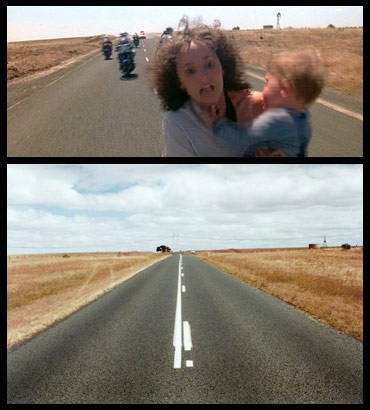
Byron Kennedy, producer of Mad Max and Mad Max II, and the other half of Kennedy Miller, pictured in 1981, two years before his tragic death in a helicopter crash. Photograph: Ross Willis.
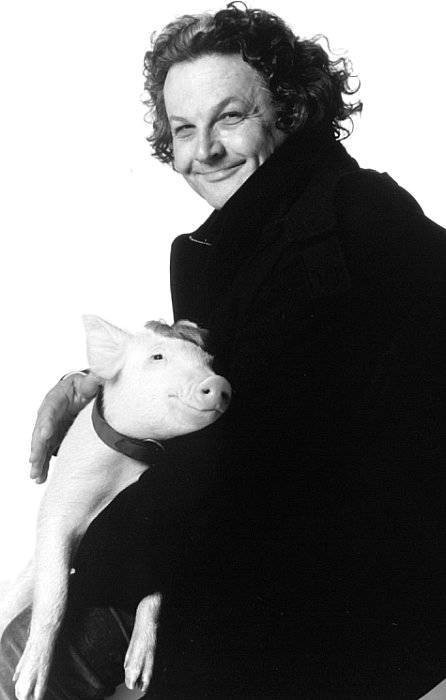
Byron Kennedy at the start of Mad Max II
Photograph by Peter Barton, Bulleen, Victoria.
http://www.madmaxmovies.com/madmaxfaq.html
In reviewing the Mad Max films, we have already eluded to one of the great tragedies in George Miller's life. On July 17th 1983, Byron Kennedy, George's closest friend, as well as business partner, was killed in a helicopter accident before the third film in the Mad Max trilogy - Beyond Thunderdome, was completed. The company they established together still bears his name, and George is the chairman of the Byron Kennedy Award, presented annually by the Australian Film Industry (AFI).
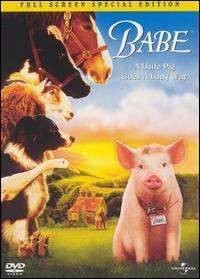
Classical photographic portrait of George Miller by, Paul Jones, at the main entrance of the Metro Theatre, Kings Cross in 1993.
Kennedy Miller Productions is located in the old Metro building in Sydneys Kings Cross.
30 Orwell St,
Kings Cross, NSW
Australia 2011
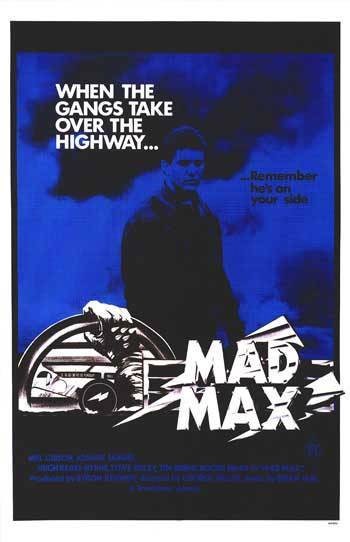
George made Byron's protege, Doug Mitchell, his new business partner, and to date, Kennedy Miller productions has won over 25 Australian Film Industry awards, 10 Logies, and many international awards, including the Golden Globe and Academy Awards. The company creates works for both cinema and television (including documentaries and mini-series.)
Movies of the 90's
Babe
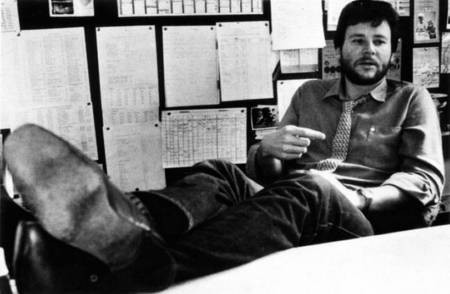
George Miller with Babe
Judd Blaise has provided the following plot synopsis of Babe
"A young pig fights convention to become a sheep dog — or, rather, sheep pig — in this charming Australian family film, which became an unexpected international success due to superior special effects and an intelligent script. The title refers to the name bestowed on a piglet soon after his separation from his family, when he finds himself on a strange farm. Confused and sad, Babe is adopted by a friendly dog and slowly adjusts to his new home. Discovering that the fate of most pigs is the dinner table, Babe devotes himself to becoming a useful member of the farm by trying to learn how to herd sheep, despite the skepticism of the other animals and the kindly but conventional Farmer Hoggett (James Cromwell). Because technically impeccable animatronics and computer graphics allow the farm animals to converse easily among themselves, first-time director Chris Noonan can treat the film's menagerie as actual characters, playing scene not for cuteness but for real emotions. The result is often surprisingly touching, with Noonan and George Miller's script, based on Dick King-Smith's children's book and, indirectly, a true story, seamlessly combining gentle whimsy and sincere feeling. These same qualities are embodied by in Cromwell's beautifully understated performance as Farmer Hoggett, which anchors the film. Despite its unlikely premise and low profile, Babe's inspirational story was embraced by audiences and critics, and the movie became an international sleeper that won an Academy Award nomination for Best Picture. It was followed in 1999 by the sequel Babe: Pig in the City".
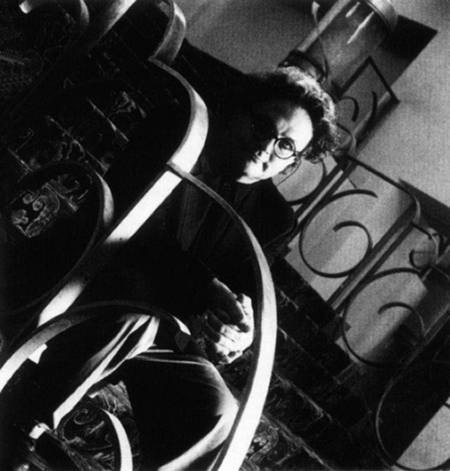
Babe. Poster.
Filmography
The following, from,
http://www.imdb.com/name/nm0004306/
is an impressive list of film and television achievements:
Filmography as: Producer, Director, Writer, Second Unit Director or Assistant Director, Miscellaneous Crew, Himself
Producer - filmography
(In Production) (1990s) (1980s)
1. Mad Max: Fury Road (2005) (in production) (producer)
2. Happy Feet (2006) (filming) (producer)
3. Babe: Pig in the City (1998) (producer)
4. 40,000 Years of Dreaming (1997) (producer)
5. Video Fool for Love (1995) (producer)
6. Babe (1995) (producer)
... aka Babe, the Gallant Pig (1995)
7. Lorenzo's Oil (1992) (producer)
8. Flirting (1991) (producer)
9. "Bangkok Hilton" (1989) (mini) TV Series (producer)
10. Dead Calm (1989) (producer)
... aka Dead Calm: A Voyage Into Fear (1989) (USA: poster title)
11. Clean Machine, The (1988) (TV) (producer)
12. "Dirtwater Dynasty, The" (1988) (mini) TV Series (producer)
13. Fragments of War: The Story of Damien Parer (1988) (TV) (producer)
14. Year My Voice Broke, The (1987) (producer)
15. "Vietnam" (1986) (mini) TV Series (producer)
16. Mad Max Beyond Thunderdome (1985) (producer)
... aka Mad Max 3 (1985)
17. "Cowra Breakout" (1984) (mini) TV Series (producer)
18. "Bodyline: It's Not Just Cricket" (1984) (mini) TV Series (producer)
... aka "Bodyline" (1984) (mini) (Australia: short title)
19. "Dismissal, The" (1983) (mini) TV Series (executive producer) 20. Chain Reaction, The (1980) (associate producer)
... aka Nuclear Run (1980)
Filmography as: Producer, Director, Writer, Second Unit Director or Assistant Director, Miscellaneous Crew, Himself
Director - filmography
(In Production) (1990s) (1980s) (1970s)
1. Mad Max: Fury Road (2005) (in production)
2. Happy Feet (2006) (filming)
3. Babe: Pig in the City (1998)
4. 40,000 Years of Dreaming (1997)
5. Lorenzo's Oil (1992)
6. Witches of Eastwick, The (1987)
7. Mad Max Beyond Thunderdome (1985)
... aka Mad Max 3 (1985)
8. "Last Bastion, The" (1984) (mini) TV Series (co-director)
9. "Dismissal, The" (1983) (mini) TV Series
10. Twilight Zone: The Movie (1983) (segment 4)
11. Mad Max 2: The Road Warrior (1981)
... aka Mad Max 2 (1981) (short title)
... aka Road Warrior, The (1982) (USA)
12. "Bellamy" (1981) TV Series (episode 1.02 "The Carver Gang")
13. Mad Max (1979)
14. Violence In the Cinema, Part 1 (1971)
Filmography as: Producer, Director, Writer, Second Unit Director or Assistant Director, Miscellaneous Crew, Himself
Writer - filmography
(In Production) (1990s) (1980s) (1970s)
1. Mad Max: Fury Road (2005) (in production)
2. Happy Feet (2006) (filming)
3. Babe: Pig in the City (1998)
4. 40,000 Years of Dreaming (1997)
5. Babe (1995) (screenplay)
... aka Babe, the Gallant Pig (1995)
6. Lorenzo's Oil (1992) (written by)
7. Mad Max Beyond Thunderdome (1985)
... aka Mad Max 3 (1985)
8. "Dismissal, The" (1983) (mini) TV Series
9. Mad Max 2: The Road Warrior (1981)
... aka Mad Max 2 (1981) (short title)
... aka Road Warrior, The (1982) (USA)
10. Mad Max (1979) (screenplay) (story)
11. Violence In the Cinema, Part 1 (1971)
Filmography as: Producer, Director, Writer, Second Unit Director or Assistant Director, Miscellaneous Crew, Himself
Second Unit Director or Assistant Director - filmography
(1980s) (1970s)
1. Dead Calm (1989) (second unit director)
... aka Dead Calm: A Voyage Into Fear (1989) (USA: poster title)
2. In Search of Anna (1978) (first assistant director)
Filmography as: Producer, Director, Writer, Second Unit Director or Assistant Director, Miscellaneous Crew, Himself
Miscellaneous Crew - filmography
1. Mad Max 2: The Road Warrior (1981) (additional editor)
... aka Mad Max 2 (1981) (short title)
... aka Road Warrior, The (1982) (USA)
Filmography as: Producer, Director, Writer, Second Unit Director or Assistant Director, Miscellaneous Crew, Himself
Himself - filmography
(2000s) (1990s)
1. Nicole Kidman: An American Cinematheque Tribute (2003) (TV) .... Himself
2. 2003 Australian Film Institute Awards, The (2003) (TV) .... Himself - Presenter
3. 40,000 Years of Dreaming (1997) .... Host/Narrator
The other George Miller
Cinematic history is Australia becomes somewhat confusing because there are two George Miller's of substantial cinemagraphic reputation in Australia.
The other, non-Kytherian, George Miller, often referred to as George T Miller, has produced or directed such movies as The Man from Snowy River (1982), Anzacs - the War Down Under (1985), Les Patterson Saves the World (1990), and Cybermutt (2002), amongst many others. (Perhaps maintaining the Miliotis 'parachoukli' surname may have been advantageous?) Cinema critics and afficianados got into the habit of referring to the "Kytherian" George Miller as "Dr George" in order to distinguish him from George T.
Back to Chinchilla, and his Queensland roots
In May 1995, George Miller returned to Chinchilla after an absence of thirty-two years, in order to shoot segments for a film commissioned by the British Film Institute marking one hundred years of cinema. Children from St Joseph's School were used as actors to play the roles of Miller's boyhood friends.
In 1996, George Miller was awarded the Brisbane International Film Festival's Chauvel Award for his, '...distinguished contribution to Australian film'. Previous award winners include Paul Cox, Fred Schepisi and Gillian Armstrong. Miller was the first Queensland born recipient of the award, which is named in honour of former darling Downs resident and international film director Charles Chauvel and his wife, Elsa. Curiously, both Miller and Chauvel were former students of the Ipswich Grammar School.
Awards
Kytherian George Miller, who takes on the roles of either producer, director, or writer - or all three roles simultaneously, has been awarded the Raymond Longford Award for distinguished service to Australian Cinema, as well as the Chauvel Award.
[Charles Chauvel's pictures included In the Wake of the Bounty (1933), Forty Thousand Horsemen (1940), The Rats of Tobruk (1944), Jedda (1955), and Australian Walkabout (1957).]
He has been nominated three times for an Academy Award: as screenwriter (Lorenzo's Oil, and Babe), and as producer (Babe).
At the Golden Globe Awards in 1996, Babe was awarded, Best Picture.
In 1996, George was awarded the Order of Australia for distinguished service to the Australian Cinema.
George Miller has been credited for helping to launch the Hollywood careers of Mel Gibson (in Mad Max) and Nicole Kidman (in Flirting), and a number of Australia's top technicians and directors including Phillip Noyce, Dean Semler, John Duigan and Chris Noonan.
As well, George Miller's career has been documented in many books on cinema, and his films are discussed in numerous critiques. Videos of the Mad Max trilogy are still best sellers, having joined the ranks of cinema clasics, while The Year My Voice Broke and Flrting are standard texts for film and communication students at some Australian universities.
In 1995 George was invited by the British Film Institute to write and direct the Australian contribution to the international celebration of the Century of Cinema called White Fellas Dreaming.
[See review of this film in Culture - subsection - Bibiliography.]
George Miller has been a Patron of the Australian Film Institute since 2001.
He is also the Patron of the Brisbane International Film Festival, and a Co-Patron of the Sydney Film Festival, since 2003.
Other Civic achievements
While continuing to make very special films, George Miller has also been involved in important civic issues. Along with Foundation Directors and fellow Kytherians, the Hon. James Samios MBE, and Ross Tzannes, he is a Director of the Museum of Contemporary Art, Circular Quay, Sydney, where for some years now he has been an advocate for a national cinematheque at the Circular Quay site.
See,
http://www.mca.com.au/
George Miller is also a founding Director of the Greek Orthodox Archdiocese' Millenium Heritage Committee, along with fellow-Kytherians, Dimitri Kepreotes and Professor Manuel Aroney.
The Chairman is the Very Rev. Steven Scoutas, see,
www.sagotc.orthodox.nsw.edu.au/CV/Fr_Steven_Scoutas_CV.htm
For a brief biography and CV for Dimitri Kepreotes, see,
www.sagotc.orthodox.nsw.edu.au/CV/Dimitri_Kepreotes_CV.htm
Connecting with Kythera. The Church of Ayia Triatha, Mitata
George's latest trip to Kythera was in 1989, when he was accompanied by both his parents. He made a very generous donation towards the restoration of Ayia Triatha church, in his father's village of Mitata, where his great-great-grandfather had once been the local priest.
[See Photography Island, subsection, Churches and Icons, for photographs by James Prineas, of numerous Icons restored during this period.
See also, section under Culture, subsection, Religion, for another image.
As unbelievable as this may sound, as late as May, 2004, a photograph of Ayia Triatha, Mitata - THE CHURCH - has not been posted to kythera-family.net.
For other images of Mitata - use the Search engine, top-right-hand-corner - and enter "MITATA".]
While Kytherians are rightly proud of George Miller's successes, it was this concern for his father's village that touched many people. The Trustee's of the Nicholas Aroney Trust, as well as other Kytherians (including members of George's own family) who held a variety of functions to raise money for the restoration, were greatly encouraged by the care he showed towards Mitata.
George Millers' siblings
George Miller's twin brother, John Miliotis, has continued on with a successful medical career, as has his younger brother, Chris Miliotis, who has also undertaken research into the anti-carcinogenic properties of Australian native plants. Bill Miller, who originally trained and worked as a lawyer, is a successful member of the Kennedy Miller company. [I hope all three will become subjects for future kythera-family.net profiles. As their mother Angela says "...I am so proud of them all for becoming...the (type) of men they have become."]
What can you contribute?
*I am absolutely certain there are thousands of other stories/photographs/ articles that pertain to George Miller and the Miliotis family.
I would encourage all persons who know/have such stories and possess such photographs and articles to please submit them to the kythera-family.net website.
*** I am deeply indebted to Peter Barton, from whom a number of the photographic images in this article have been sourced.
I am very impressed by the generosity of spirit entailed in his openly granting "...Permission ..... for non-profit users to store or redistribute this document as they desire, providing the document remains intact, including the statement of copyright."
Would that others be so generous.
****Additional references include;
http://members.optushome.com.au/lesturner/docgallery.htm
http://www.madmaxmovies.com/madmaxfaq.html
http://www.screeneditors.com/news/15a14.htm
http://www.currency.com.au/preview/MadMax.htm